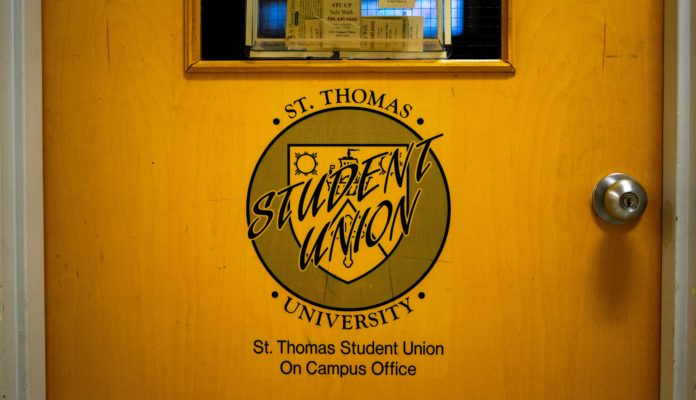Did you know that $179.50 of your full-time tuition fees was allocated to STUSU this year? For part-time students, the union fees were $30.80 per credit hour course, according to the STU website. This resulted in a total of $302,988 collected by the union. That, plus a capital transfer from the university, leaves the union with a total budget of $319,735.
But where does that money go? According to the February Budget Update, which is the most recent to date, 71 per cent goes to union operations – including salaries and public relations – while 29 per cent goes to student affairs, including activities, emergency bursaries and assistance.
The union’s projected net balance is zero, meaning that it has to use all of its money and not save any for the next academic year. But as of February, the student union has only used 62 per cent of its student affairs budget, the portion that goes to student services.
“If it gets to the point where the surplus is rotting out, then we have to take it upon ourselves to decide on what we can do student-services-wise with that money,” said Tina Iannarelli, general manager of STUSU.
Last year, the union launched the results of its More Than Tuition campaign, which highlighted student needs.
The campaign indicated that 54 per cent of students’ primary concern is tuition.
Related: STUSU releases results for More Than Tuition campaign
While students are not able to receive financial help from STUSU for tuition or rent, they are eligible for other forms of financial help that might alleviate costs.
One of those forms is emergency bursaries, which are granted to students to pay for emergency costs up to $500.
However, from the $24,700 budgeted for emergency bursaries, only $13,900 was spent by February.
This is not due to a lack of applications. Isabela Baralt, vice president of student life, said the union receives around three applications weekly.
Of those applications, only 33 have been approved this school year.
“Sometimes we get a request for money when the solution is not necessarily money, so then we navigate with the student to find the right solution,” said Baralt. “It is really on a case-to-case basis and depends on the student’s need.”
Another way the union can assist students is through food security programs. The More Than Tuition campaign revealed that 51 per cent of students are concerned about food security and the cost of living, yet this year’s executive team has reduced its budget to address these concerns.
In the 2022-23 academic year, the budget for Food Smart, a $15 bag that includes $35-45 worth of food for applicants, was $300. Last year’s union donated $1,000 to the STU food bank. However, this year, the budget for Food Smart was cut in half and the union did not donate any money.
Baralt explained that the cut to the Food Smart program was due to savings in transportation, but she is “not a 100 per cent sure” why the donation was cut from this year’s budget.
Iannarilli added the donation might still happen at the end of the semester to allocate some of the surplus.
“I didn’t realize that we had dropped the donation from the budget, to be honest,” she said. “That could have been an oversight because I do not remember dropping that from the budget.”
Another discrepancy between the spent budget and the alleged student needs is engagement, which has been low since the COVID-19 pandemic. STUSU budgeted $1,000 for representatives to organize activities for their constituents, yet only the international representative, Ana Lucía Pavón, has organized an event that required money, valued at $61.93.
Again, this is not due to a lack of demand. Grad president Lindsay Graham said in an email to The Aquinian that she contacted the union “to access the funds for these events” but never received a response or any information.
“As a result of this, the grad class committee had to apply for alternate funding which was generously provided by the STU alumni association making these events possible,” Graham said, noting that she sent an email right after being elected to ask about future steps and sent the president a personal message to ask about funding.
Other representatives have gotten funding from other sources, such as the Indigenous representative Tanner Agustine. In an email, he said the Indigenous students representative position has its “own fund unrelated to the student union,” so he didn’t feel it was necessary to use any money from STUSU.
The Aquinian contacted the rest of the union’s representatives to ask if they had requested any funding for their events but received no reply.
Iannarelli said this discrepancy should be addressed in the upcoming years. Specifically, she mentioned the emergency bursaries could be expanded to cover other needs, as they were designed “many years ago” without considering the current cost of living.
“Given those statistics, maybe it’s something for future executives,” she said. “Maybe this is something that we need to consider in future budgeting.”

